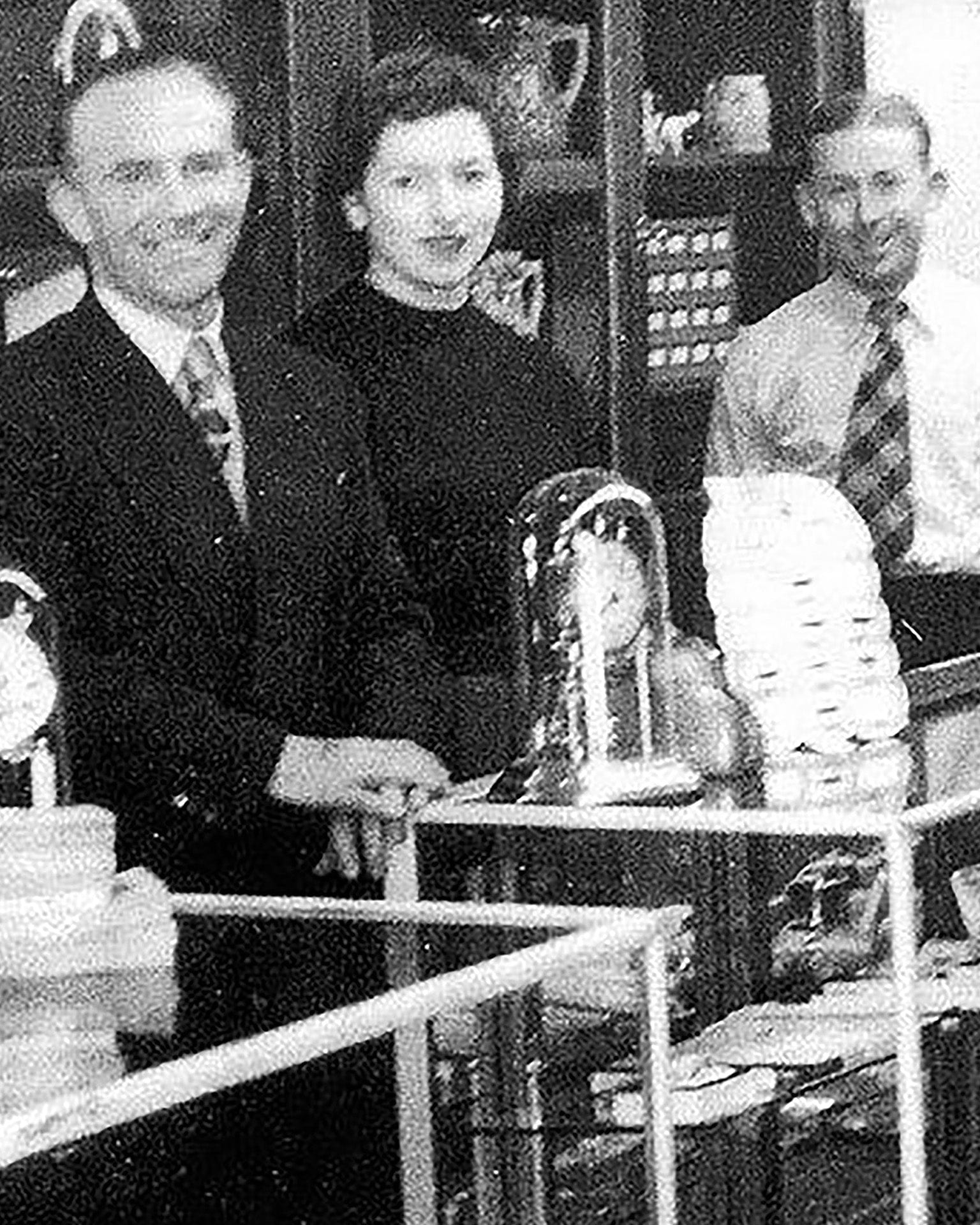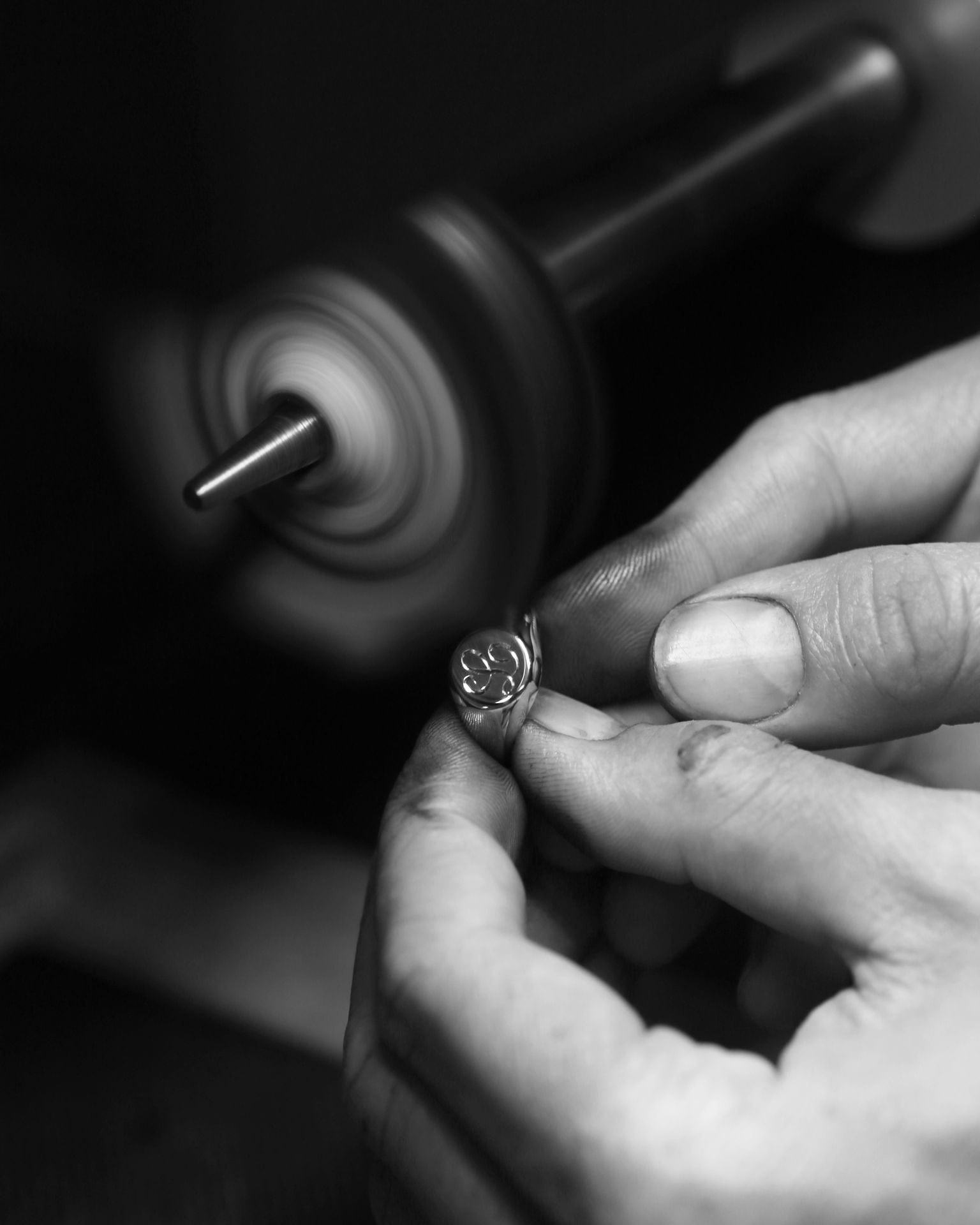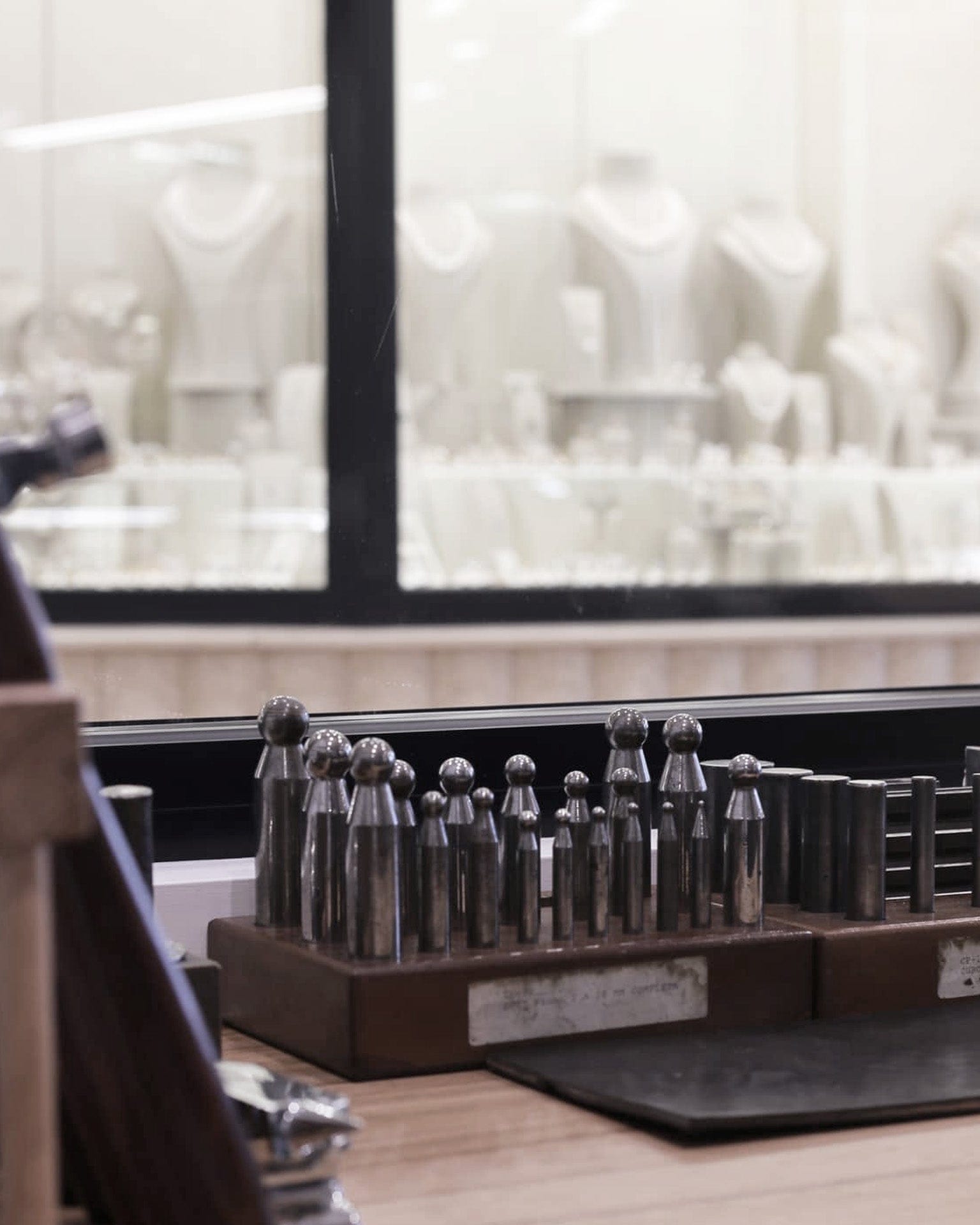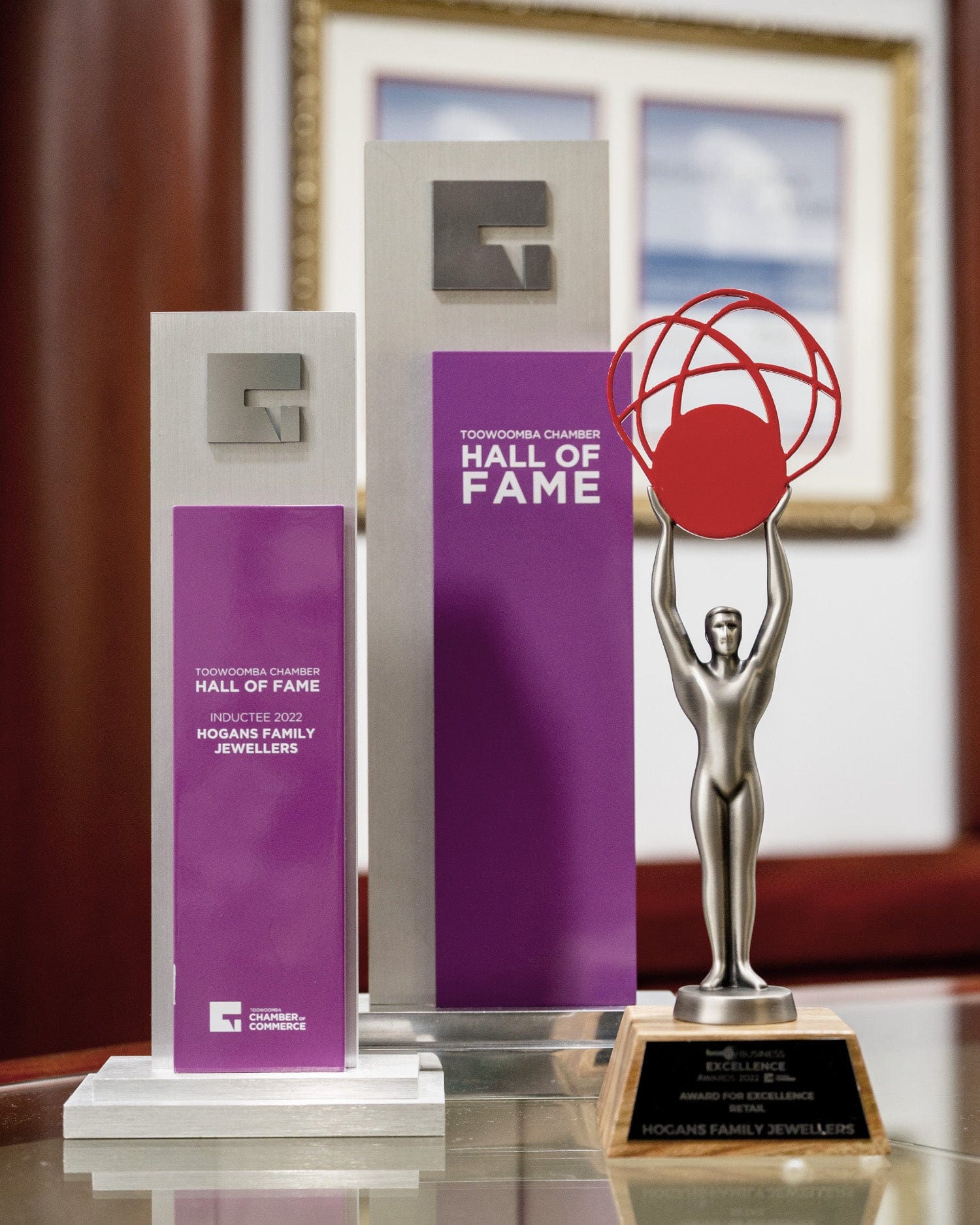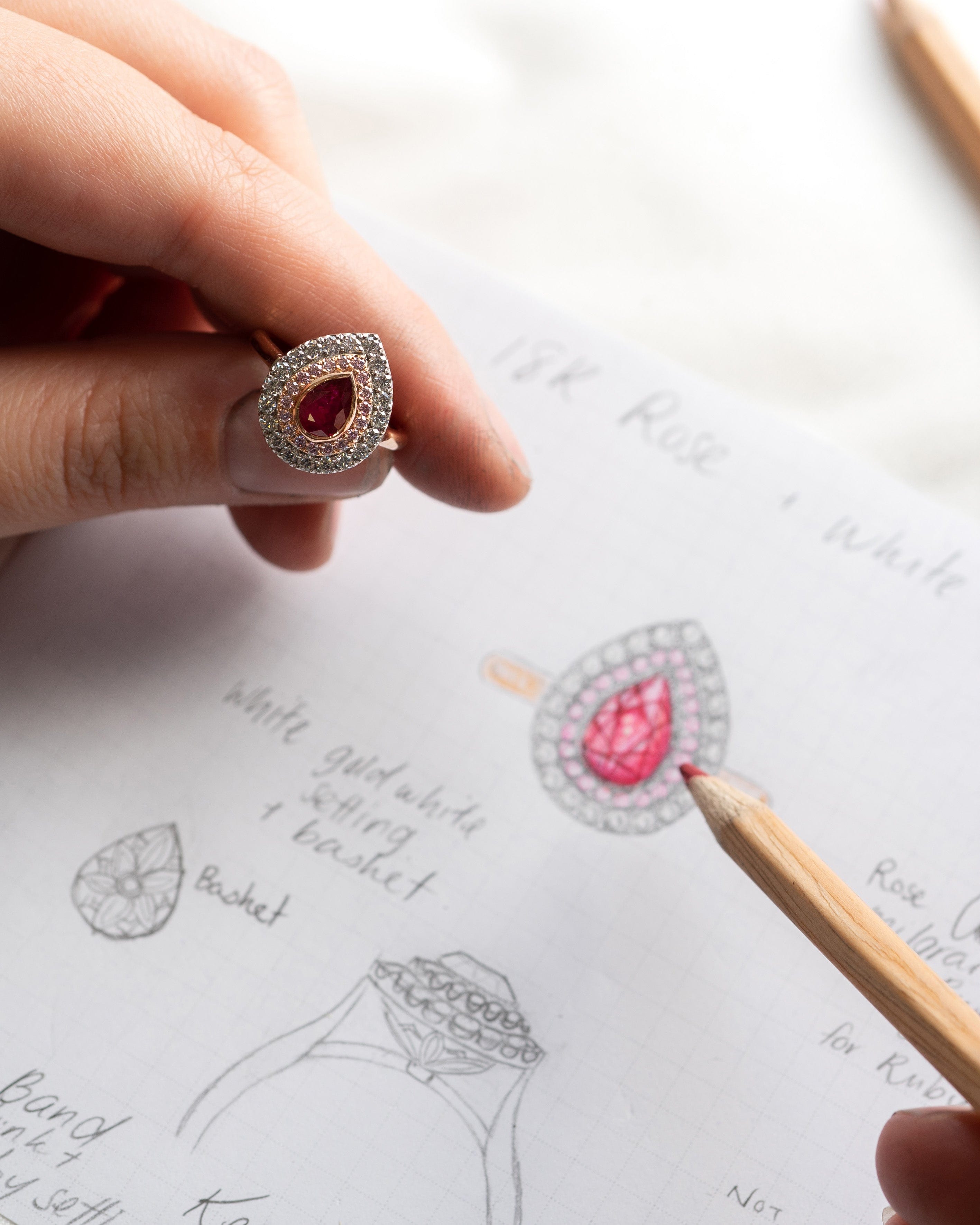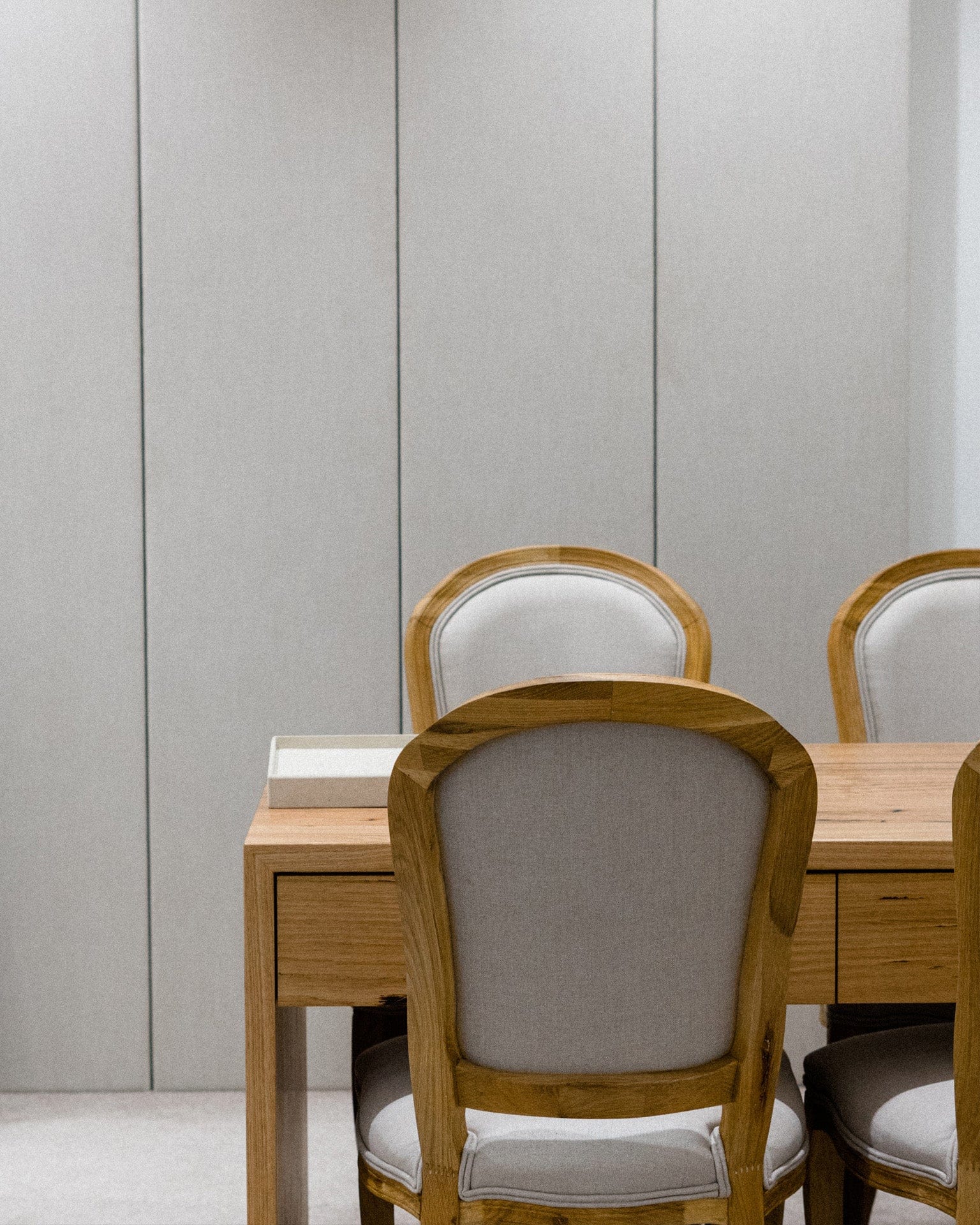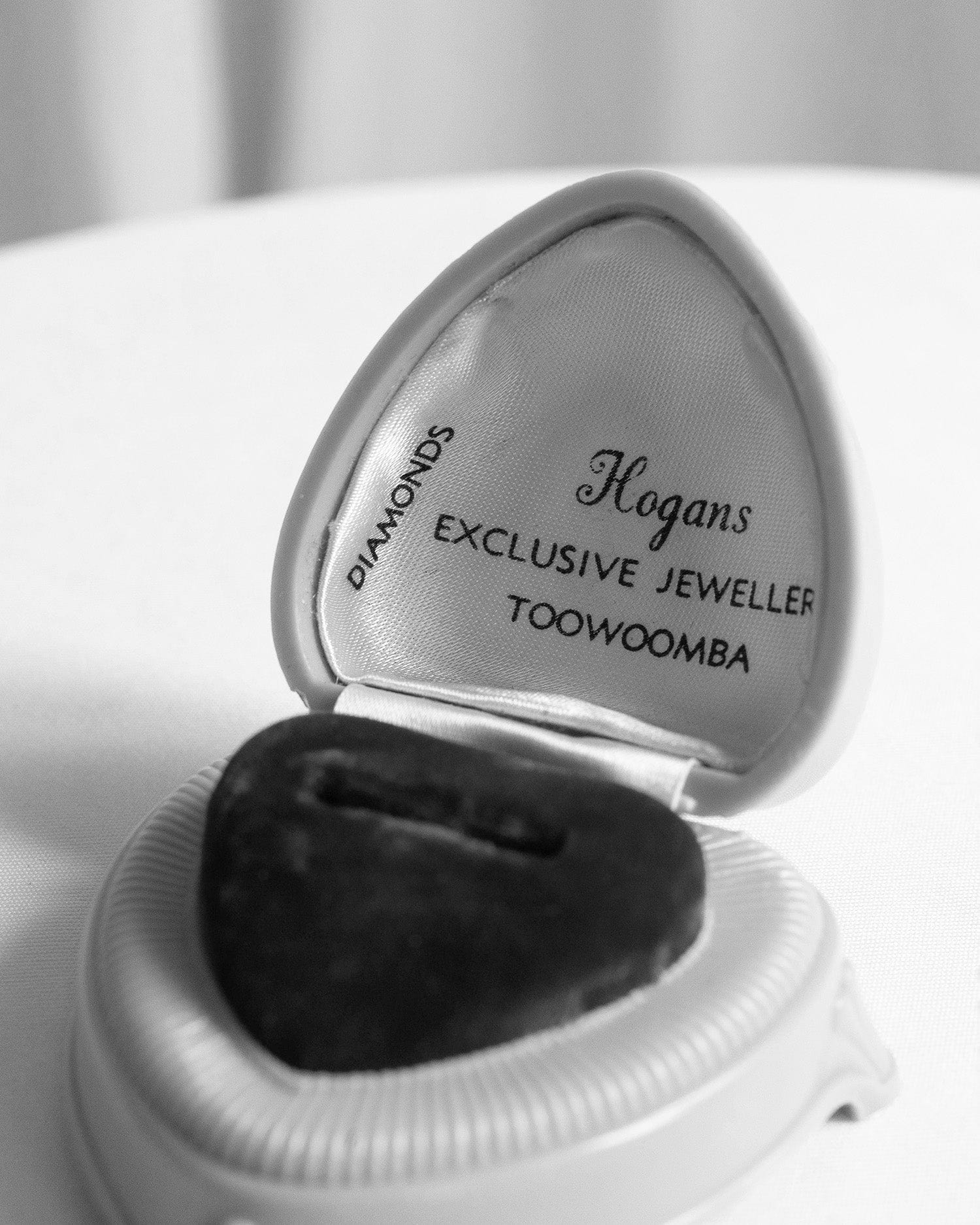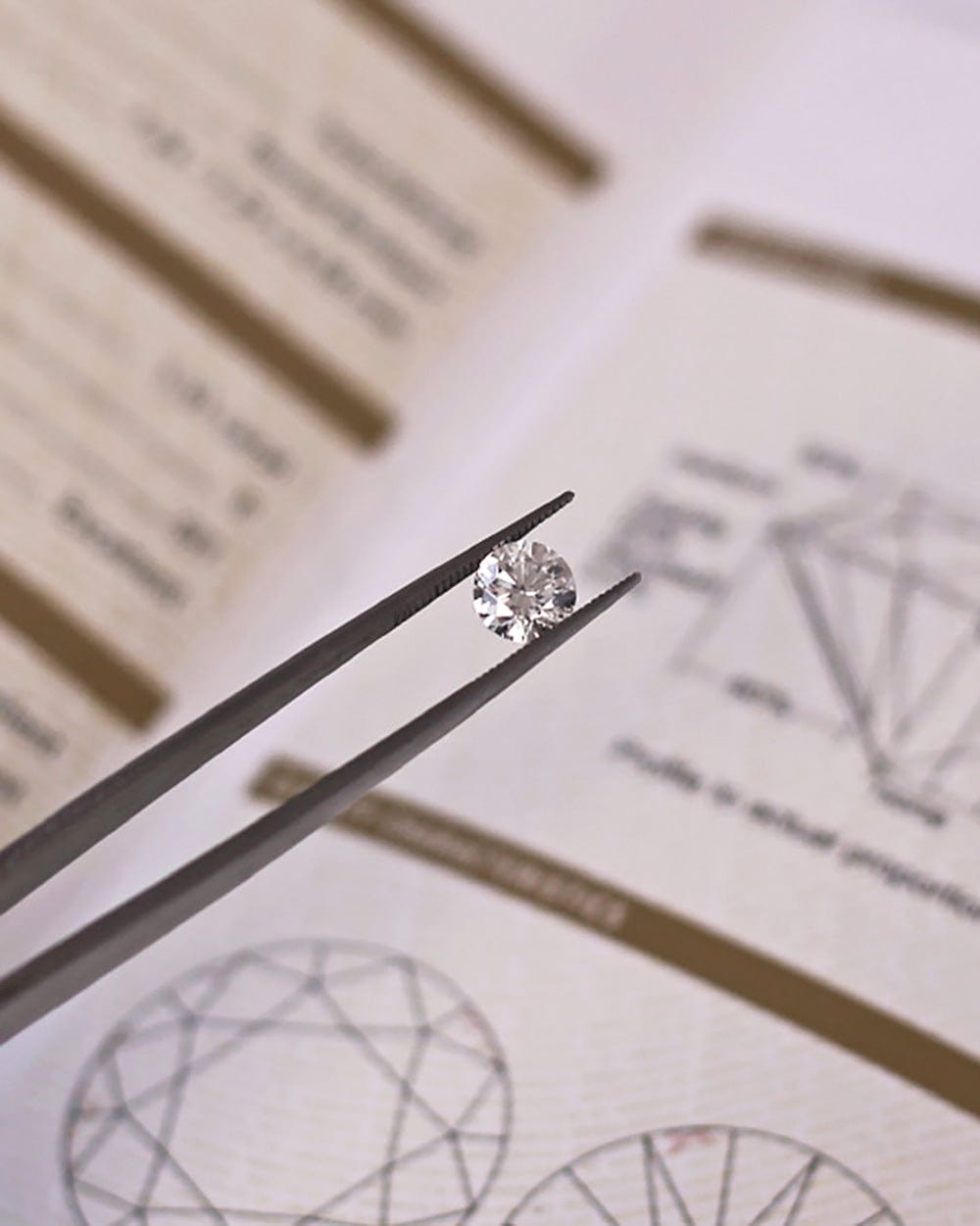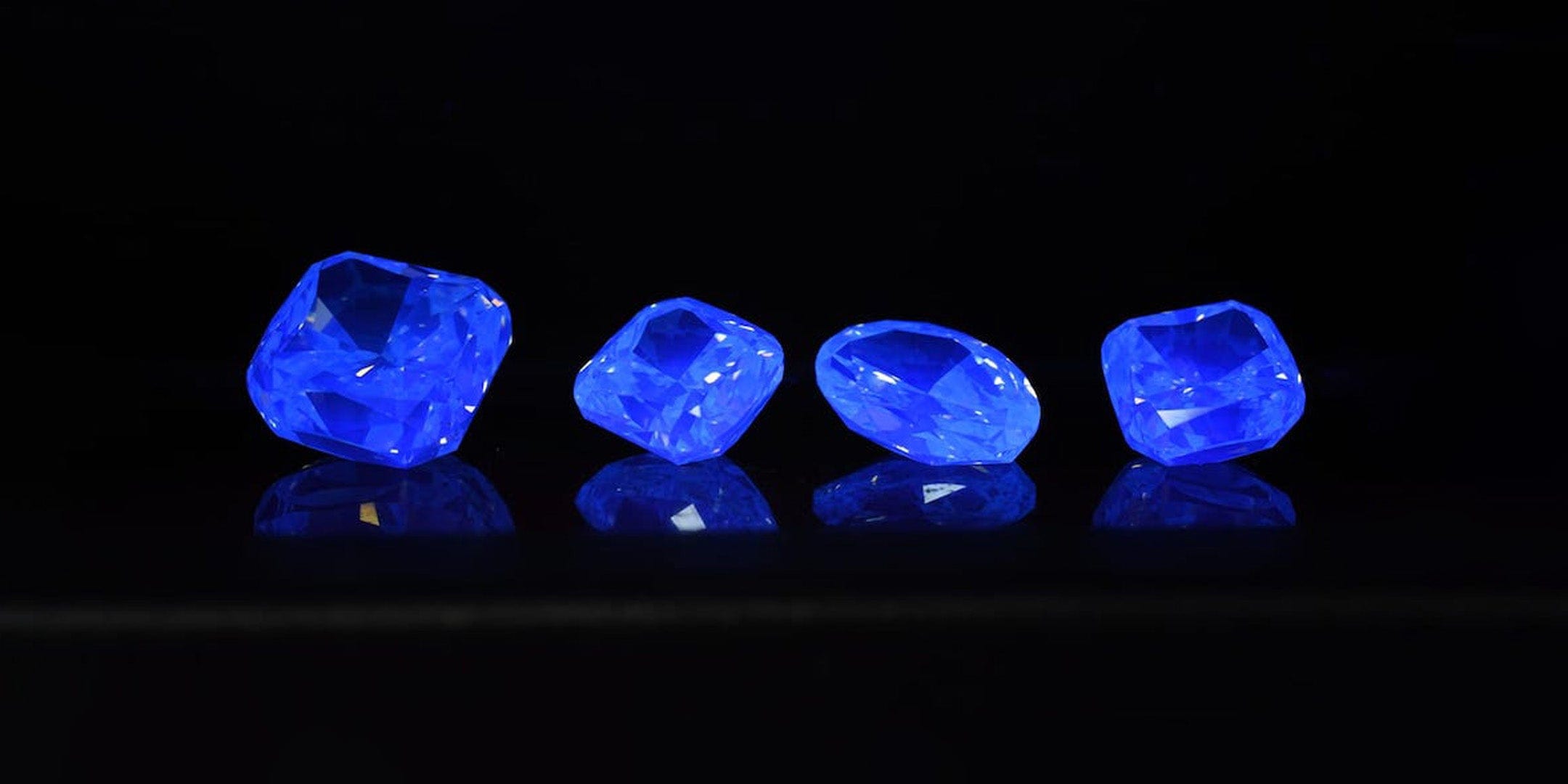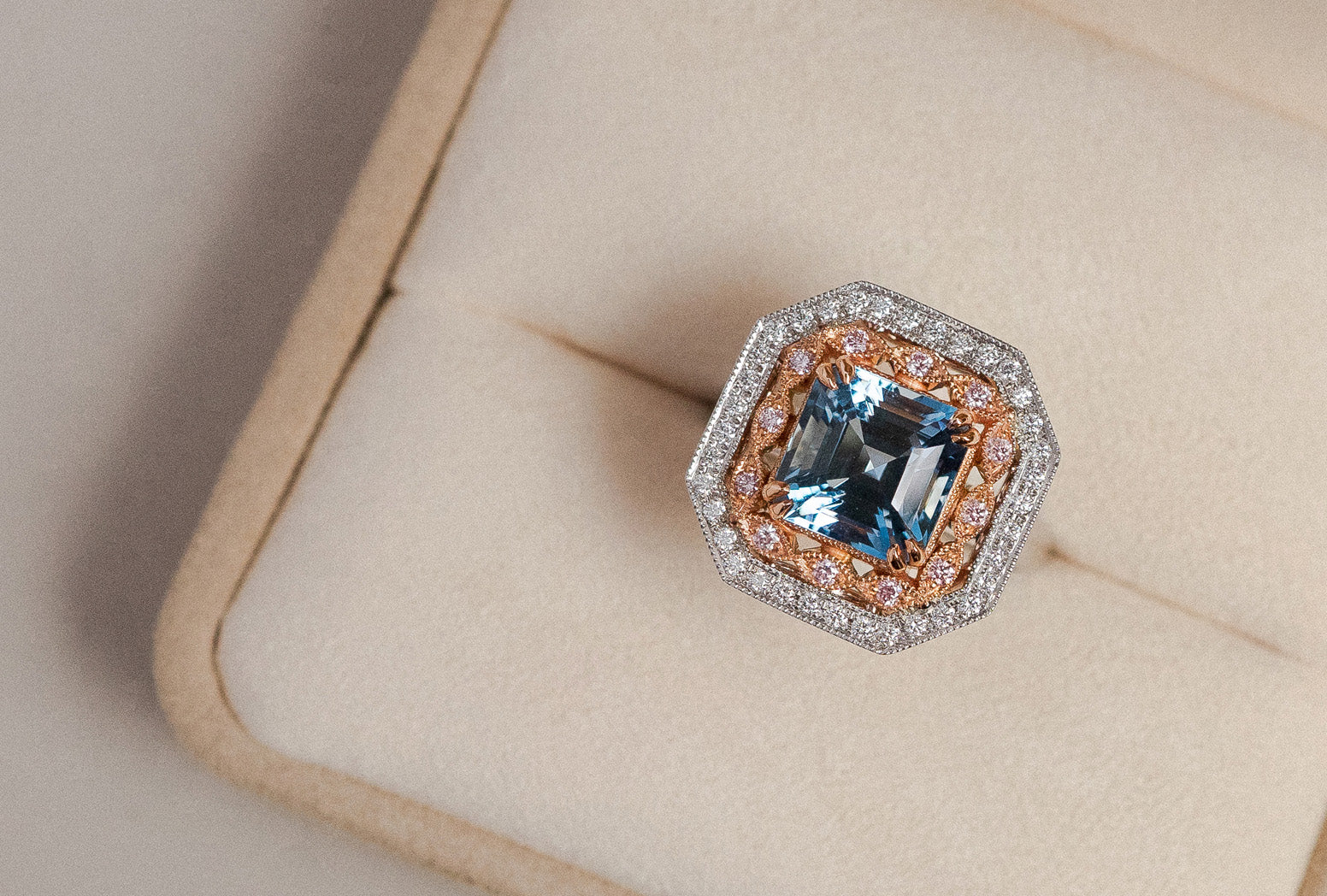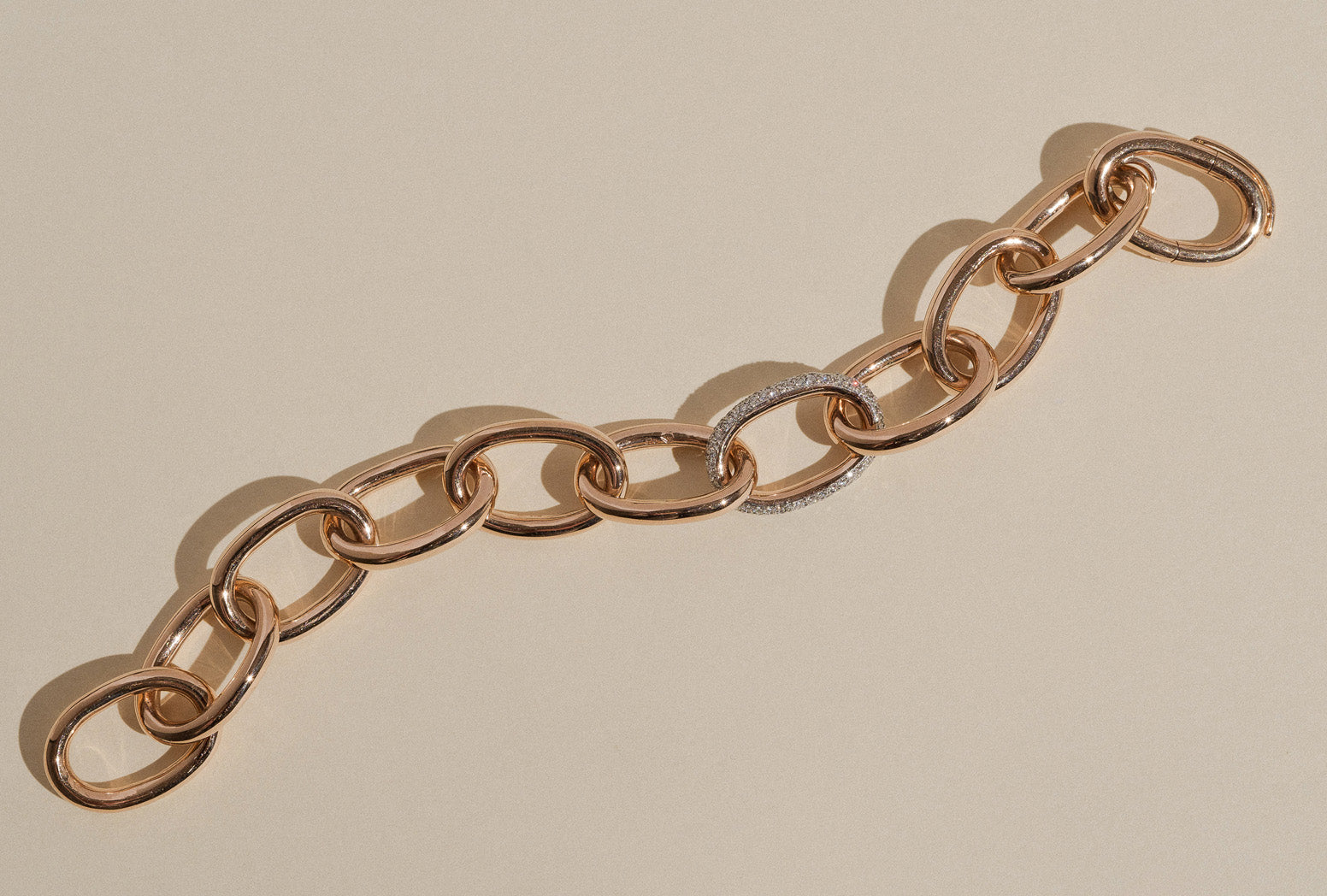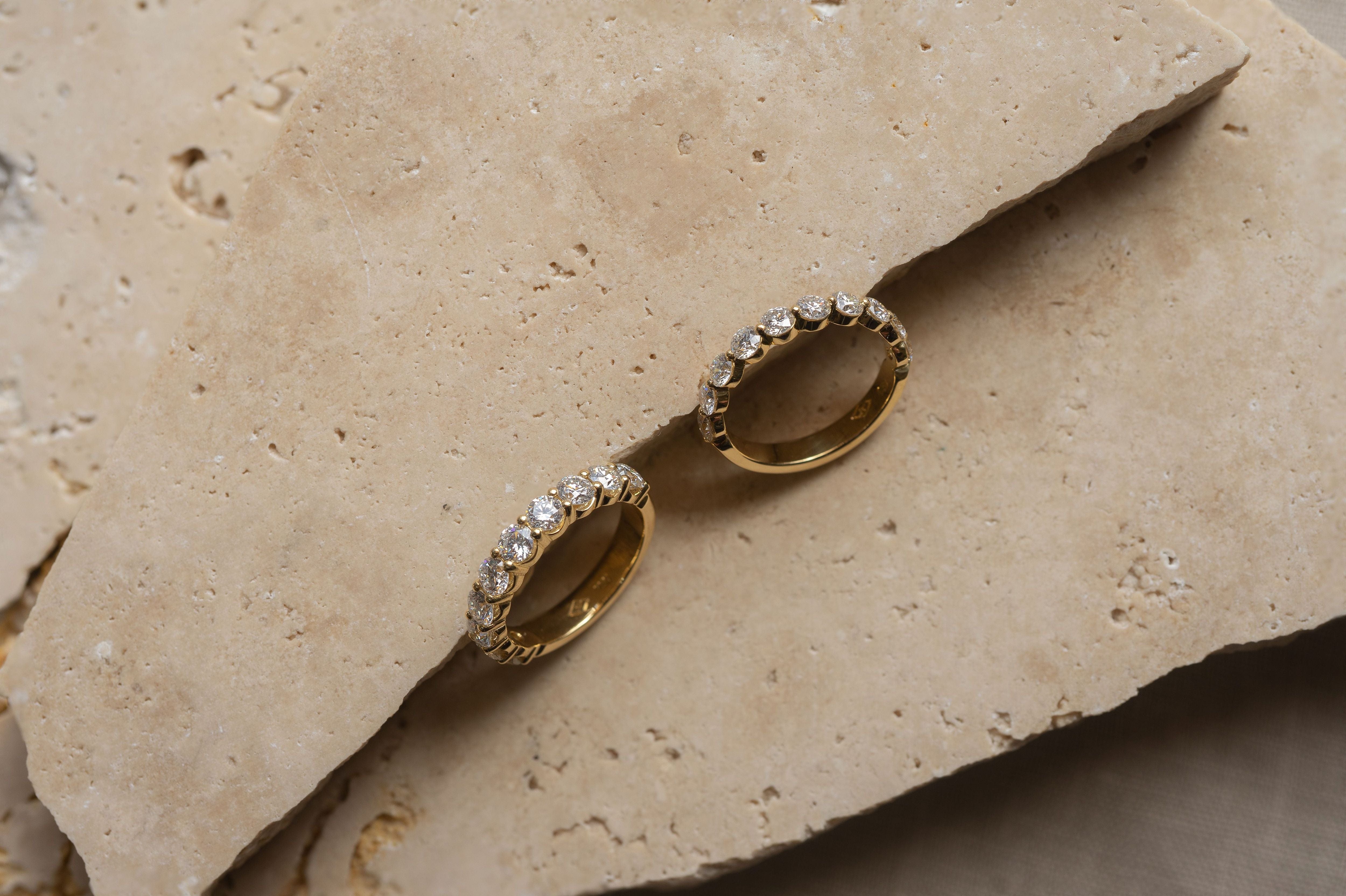Diamonds are among the most revered and sought-after gemstones in the world. Their remarkable brilliance, unmatched hardness, and timeless appeal have earned them a prominent place in jewellery, particularly in everyday pieces such as engagement rings. But there’s an often-overlooked characteristic that can influence the appearance and value of a diamond, and that is fluorescence. This phenomenon, though subtle, can play a significant role in how a diamond looks under different lighting conditions. In this journal, we’ll explore what diamond fluorescence is, how it works, and how it can impact your diamond’s appearance and value.
What is Diamond Fluorescence?
Diamond fluorescence refers to the diamond’s ability to emit visible light when exposed to ultraviolet (UV) light. This glowing effect occurs when the diamond absorbs UV rays and re-emits them as visible light, which can vary in colour. The fluorescence is a result of the diamond’s internal structure, specifically, the presence of trace elements like boron or nitrogen within the crystal lattice. These elements can cause the diamond to glow when exposed to UV light, particularly in a range of blue hues, although it can sometimes be yellow or greenish.
Fluorescence Intensity and Colour
The strength and colour of fluorescence can differ from one diamond to another. The Gemological Institute of America (GIA), a leading authority in gemstone grading, classifies fluorescence into six categories:
1. None: No fluorescence detected.
2. Faint: The diamond exhibits a faint glow.
3. Medium: The fluorescence is noticeable under UV light.
4. Strong: The diamond glows significantly when exposed to UV light.
5. Very Strong: The fluorescence is intense and very visible.
6. None to Very Strong: This scale accounts for the varying degrees of fluorescence found in diamonds.
Fluorescence is most commonly seen as a blue glow, but other colours, such as green or yellow, are also possible, though they are much rarer. The colour of fluorescence can affect the diamond's overall appearance and how it interacts with the surrounding light.

How Does Fluorescence Affect Diamond Appearance?
At first glance, the fluorescence of a diamond may seem like a minor characteristic, but it can have a considerable impact on its visual appeal, depending on the circumstances. Understanding how fluorescence interacts with light is key to knowing whether it will enhance or detract from the diamond’s overall look.
In Normal Light
In most everyday lighting conditions, fluorescence is not usually visible, as UV light is not present. However, under the right circumstances, fluorescence can subtly enhance a diamond’s brilliance and sparkle. For diamonds with faint to medium fluorescence, this glow can add a touch of liveliness, especially in natural sunlight, which contains traces of UV light.
In UV Light
When exposed to UV light, diamonds with fluorescence will exhibit a visible glow. The effect can range from a soft blue to a vivid blue or even a coloured hue. This glow can make the diamond stand out in environments where UV light is common, such as under black lights or certain types of artificial lighting used in some clubs or party venues.
Under Different Lighting Conditions
Fluorescence also has the potential to impact how a diamond looks in various lighting environments. For example, diamonds with strong fluorescence can sometimes appear milky or hazy under certain lighting conditions, particularly in very bright or artificial light. This is most noticeable in diamonds with higher levels of fluorescence.
On the other hand, diamonds with a faint or medium fluorescence can appear clearer and brighter in most lighting, offering a visual lift without sacrificing clarity or brilliance. In particular, diamonds with fluorescence often seem more vibrant in natural light, thanks to the re-emission of light from within the gemstone.
Does Fluorescence Impact Diamond Value?
The presence of fluorescence can also influence a diamond’s price, but the effect is not as straightforward as you might think. Generally, diamonds with strong fluorescence are priced lower than those without fluorescence. This price reduction can be attributed to the fact that fluorescence has the potential to create a cloudy or hazy appearance, particularly in diamonds with higher levels of fluorescence.
Choosing a Diamond With or Without Fluorescence
When selecting a diamond, the decision to choose one with or without fluorescence ultimately depends on personal preference. Here are a few things to consider before making a choice:
1. Personal Aesthetic Preference: Some people love the unique glow that fluorescence can provide, especially in the right lighting. Others may prefer the classic look of a diamond without fluorescence for a more traditional appearance.
2. Lighting Environment: Think about where the diamond will be worn most often. If the diamond is going to be worn in environments with UV light (for example under certain artificial lighting), the fluorescence may be more noticeable. In normal daylight or indoor lighting, it’s less likely to have an effect.
3. Diamond Grade: If you are considering a diamond with a lower colour grade (faint yellow or below), fluorescence can be a beneficial factor to enhance the diamond's overall appearance. For higher-grade diamonds that are colourless or near colourless, the presence of fluorescence may not add much value or visual appeal.
Diamonds At Hogans
At Hogans, our Master Jeweller hand selects only the highest quality diamonds that are either colourless or near colourless and contain nil fluorescence. This is something that can be shown in a diamonds certification report, for example, those from the Gemological Institute of America.
Diamond fluorescence is a fascinating and unique characteristic that adds a layer of complexity to understanding diamonds. While fluorescence does not affect a diamond’s basic quality, such as its cut, carat, and clarity, it can influence its visual appeal and market value. Whether it makes it appear cloudy largely depends on the strength and type of fluorescence, as well as the lighting conditions in which the diamond is viewed.
Ultimately, fluorescence is just one aspect of what makes up a diamond's aesthetic. As with any diamond purchase, understanding how it aligns with your preferences and how it might look in different environments is the key to selecting the right diamond for you. Whether you choose a diamond with fluorescence or one without, knowing the facts can help you make an informed decision that will sparkle for a lifetime.

